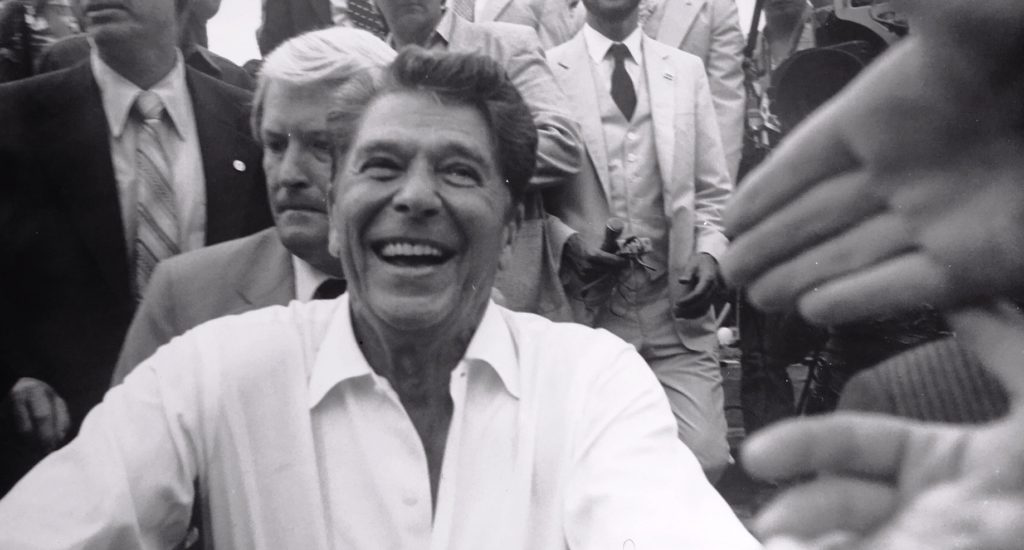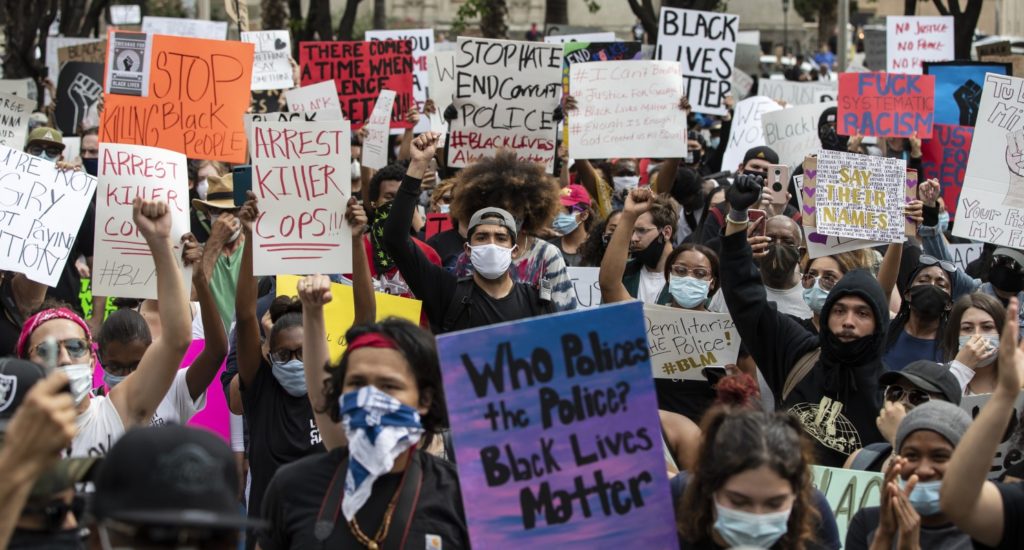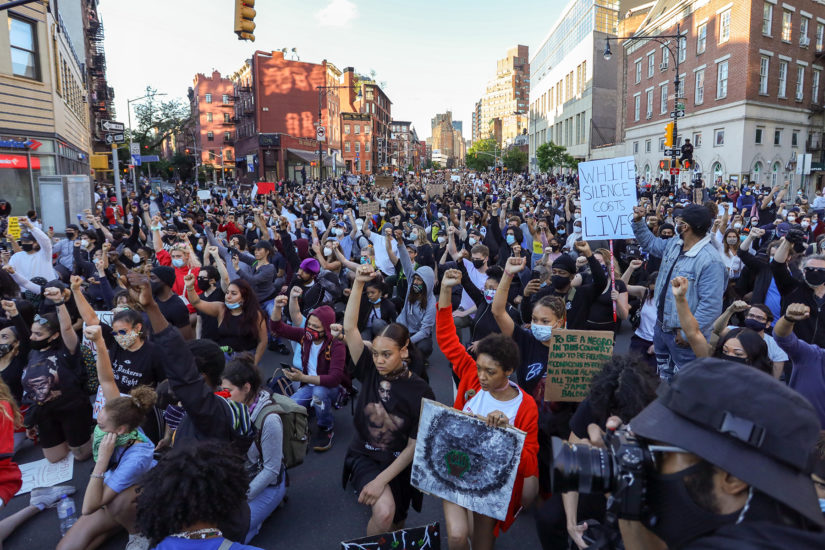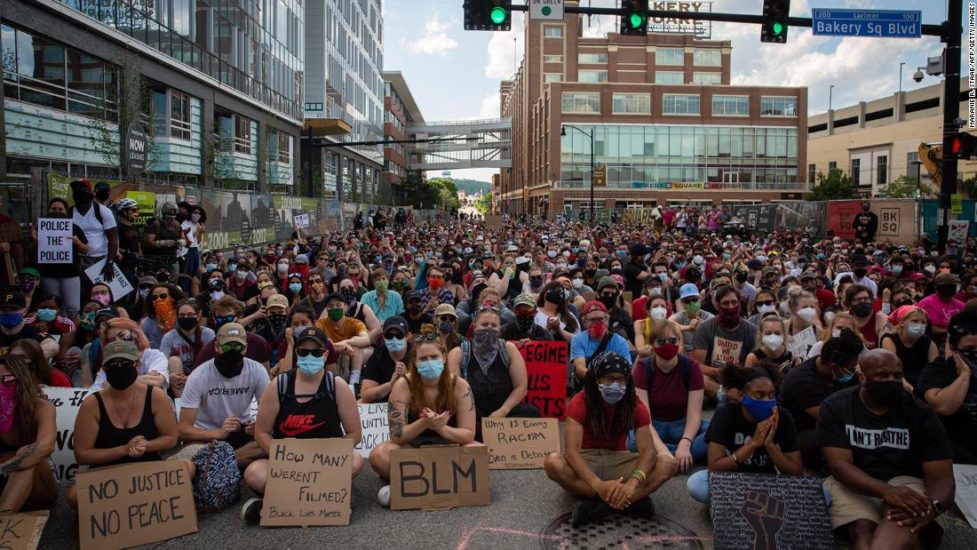In pursuit of the presidency, and the defeat of an incumbent southern Democrat, Ronald Reagan’s 1980 presidential campaign took a trip to a sparsely populated county in rural Mississippi to win over working-class white voters bitterly enraged by federal laws and court orders aimed at integration.
To win over the people of Neshoba County, Mississippi, Reagan boasted of his firm belief in “states rights,” a code word for sustaining the apartheid rules of Jim Crow. Reagan was eager cement the support of white working class Southerners who had voted Democrat ever since FDR’s New Deal helped pull them out of poverty.
Not lost on either the attendees or reporters covering the visit by the Republican presidential nominee, Neshoba’s county seat, Philadelphia, Mississippi, was the site of one of the most infamous murders of the civil rights movement: the June 1964 killing of three civil right workers, two white men and one black man, by local members of the Ku Klux Klan. The murders grabbed national, and international headlines, and painted Neshoba County with infamy. For much of the country, Neshoba was the home of hardened segregationists. For locals, the Freedom Summer volunteers were intruders who had no business telling Mississippians how they should run their local elections, or any other aspect of their closed society.

Forty years later, the Republican President Donald Trump, an heir of Ronald Reagan’s successful cementing of Richard Nixon’s “southern strategy,” decided upon Tulsa, Oklahoma as the site for his first major public rally since coronavirus outbreak and the murder of George Floyd by police in Minneapolis sparked protests and rallies in more than 140 cities and towns across the country. Curiously, Trump had chosen to speak in Tulsa on June 19th, widely-known among African-Americans as Juneteenth, the official end of slavery in 1865.
When political opponents blasted Trump for the apparently tone-deaf timing of the Tulsa rally, he backed off, moving the event to the following day. South Carolina Sen. Tim Scott explained that the president was unaware of the significance of Juneteenth or the 1921 massacre in Tulsa by a white mob that attacked, murdered and burned the black neighborhood of the city’s Greenwood District, known at that time as the Black Wall Street, shooting and killing up to 300 people (though some historians place the death toll even higher.)
Though the Republican Oklahoma Sen. James Lankford acknowledged “there are special sensitivities there in Tulsa,” to the Greenwood Massacre, the timing of the campaign rally, Trump said, coming as it does in the wake of the George Floyd protests, should be seen as a “celebration.” Exactly who might be celebrating was unclear though judging from Trump’s recent tweets extolling “law and order,” the president aims to appeal to those more bothered by the destruction of some stores in the wake of the protests than the propensity of police officers to use excessive force against blacks than white and other minorities.

Back in 1980, Ronald Reagan took much the same approach. Reagan, the toothy, B-movie actor who made his political mark in Hollywood supporting Joe McCarthy’s virulent and largely successful attack on liberals and other dissidents, wanted the all-white crowd at the Neshoba County Fair to know that he understood their contempt for the 1965 Voting Rights Act, the 1964 Civil Rights Act and the landmark Supreme Court case of Brown v. Board of Education of Topeka (1954). By 1980, however, those frustrations centered on forced busing, and similar federal and court efforts to end discrimination in housing, employment and voting.
The first Presidential candidate to speak at the fair, Reagan keenly understood that white Southerners, as well as working-class whites in northern cities, long had viewed federal efforts to end institutional racism as illegitimate federal intervention. Considering that Neshoba County’s population was 24,000 in 1980 (today, it’s 29,000), Reagan’s trip to rural Mississippi was a very big deal.
“I believe in state’s rights,” Reagan told the overwhelmingly white crowd. “I believe that we’ve distorted the balance of our government today by giving powers that were never intended in the constitution to that federal establishment. And if I do get the job I’m looking for, I’m going to devote myself to trying to reorder those priorities and to restore to the states and local communities those functions which properly belong there.”
Reagan never mentioned the murders of James Chaney, Andrew Goodman and Mickey Schwerner even though the fairgrounds were a short distance from where the bodies of the three young men were found in an earthen dam. Reagan also didn’t speak in favor of the civil rights movement, which had exposed Mississippi, with its proportionately large black population, as a cruel place for anyone advocating racial equality. Reagan would defeat Georgia’s Jimmy Carter in 1980, taking Mississippi by 1%.
It is questionable whether President Trump will mention the Greenwood Massacre when he speaks in Tulsa later this week, 99 years after the largest race riot in American history. Greenwood’s 35 square-blocks was home to one of the largest concentrations of African-American-owned enterprises and wealth in this country. It is unlikely that Trump will remark on the recent discovery of mass graves used to bury victims of the firebombing or local efforts in Tulsa to officially recognize and make amends for the murder and destruction.
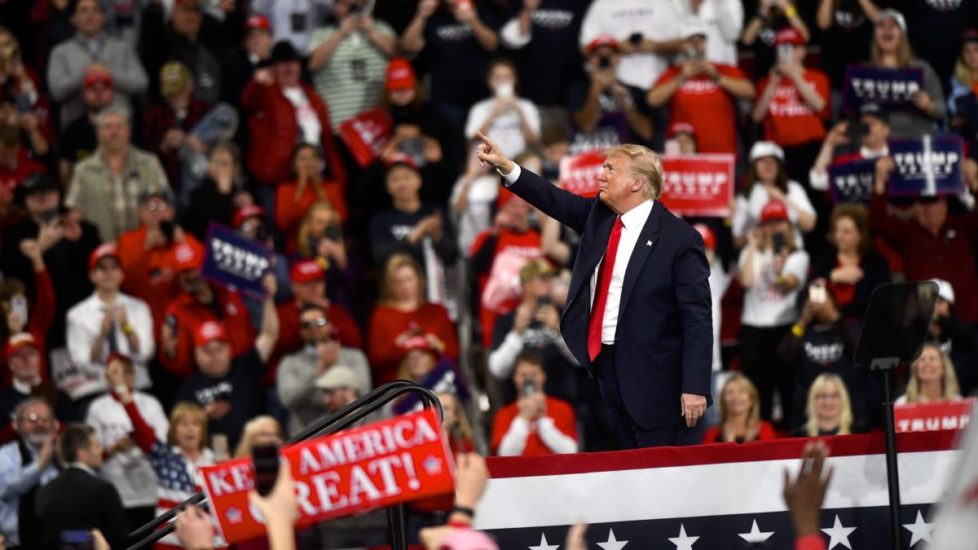
Just as a prominent Mississippi Republican had recommended Neshoba County as the place where Ronald Reagan could find “George Wallace-inclined voters,” Donald Trump has chosen Tulsa as the place to reconnect with those his so-called “base” who apparently also view the multi-racial George Floyd protestors as “thugs” or applaud this president’s threat that “when the looting starts, the shooting starts.” No Republican or Democratic presidential candidate visited the Neshoba County Fair until Trump sent his son Donald Trump Jr. to the event in August 2016 immediately after the Republican convention rather than to a previously scheduled event aimed at Latinos.
Trump, in the words of Mississippi writer David Dallas, shows no signs of rejecting his party’s “race-baiting Reagan legacy.
If there was any doubt about Reagan’s eagerness to use race to win over white voters, he visited Neshoba again for his 1984 re-election campaign, and offered, to the delight of the white crowd, the Confederate battle cry of “The South Shall Rise Again.” Similarly, Trump is betting his Tulsa rally will also help bring him a second term.
